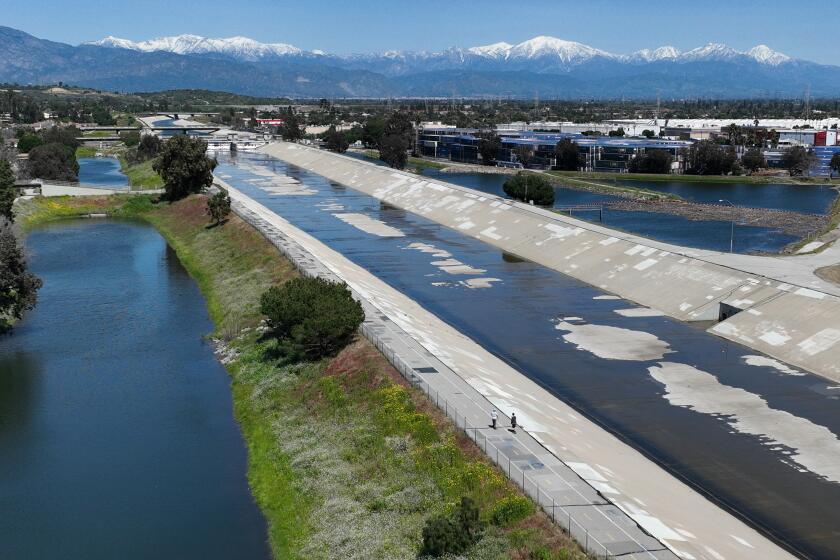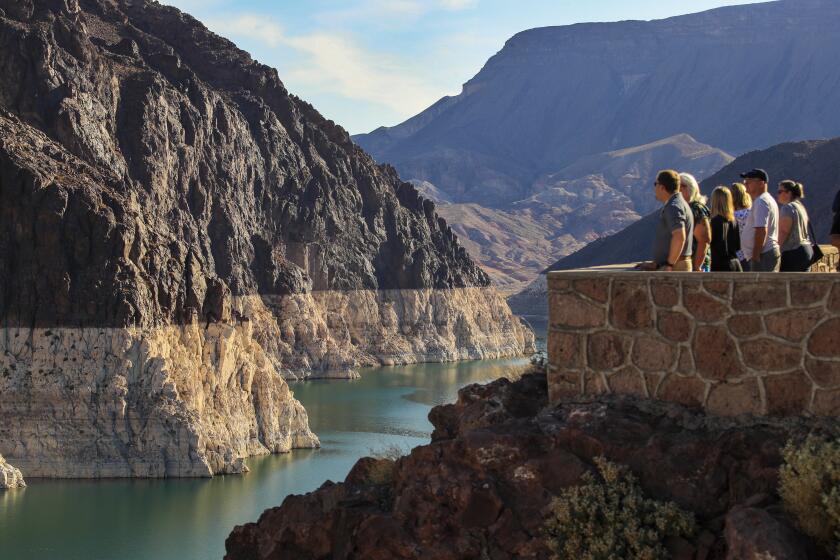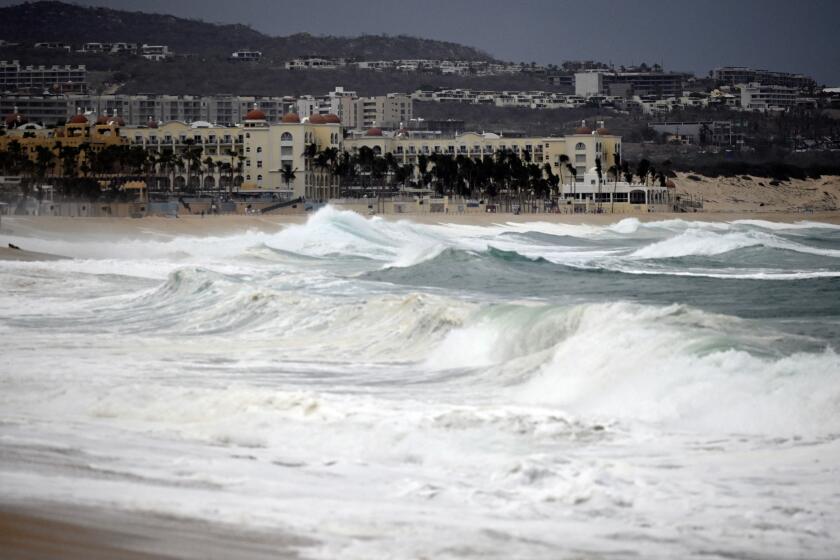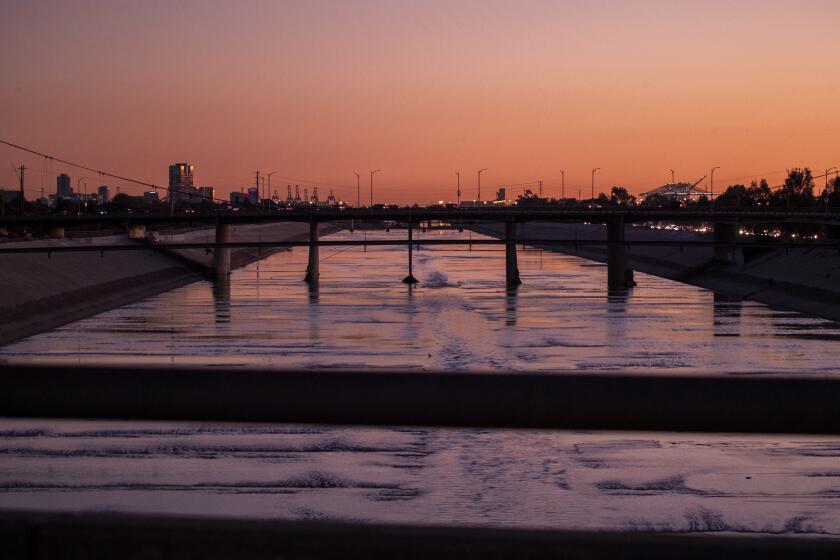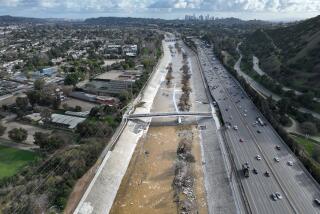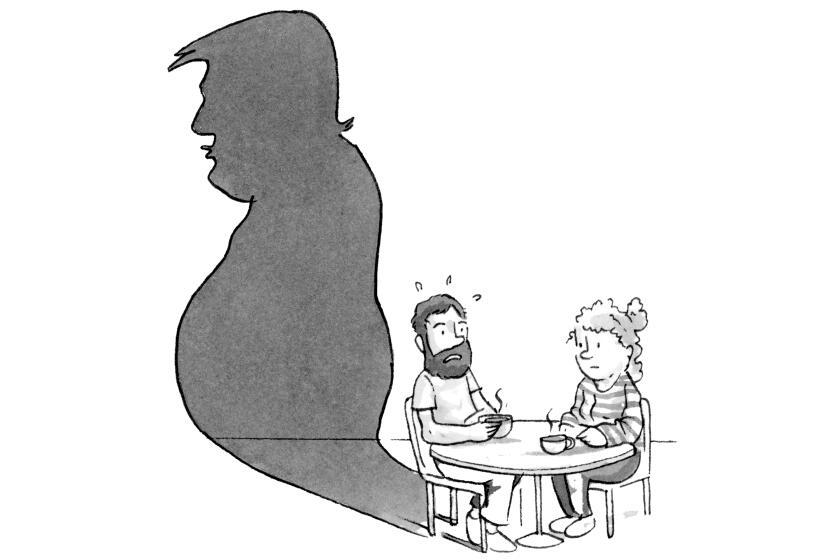Editorial: L.A. may not get another wet winter for a while. We should prepare for drier times

It’s the second straight year of above-average rain and snow in California, amid the state’s driest period in 1,200 years. The respite from drought is certainly welcome, despite flooding, mudslides and associated miseries. Now meteorologists and oceanographers are watching possible La Niña conditions develop in the Pacific, perhaps signaling a return to drier times.
It’s an appropriate time to take stock — of how we weathered the last two winters, what we’ve learned and what’s ahead.
The same flood-control system that protected L.A. from the atmospheric rivers also saw tens of billions of gallons of stormwater flush to the sea.
It’s noteworthy that L.A., engineered to get as much rainwater out of the basin and into the ocean as quickly as possible, has now made remarkable progress in the other direction. The Los Angeles Department of Water and Power captured and stored more than 13.5 billion gallons of stormwater in February compared with 8.4 billion gallons during the same period last year. That’s enough to meet the needs of 165,000 households for one year.
But Southern California has millions of households. The stored water won’t be enough to erase the impact of the inevitable next drought.
When it comes to stormwater capture, California stands out for “untapped potential,” according to the Pacific Institute.
It will help, though, and it’s an encouraging signal that L.A. can improve its ability to grab and use stormwater. We still let far too much precious fluid escape to the sea. More investment, more infrastructure and more brainstorming are needed. But we’re on the right path.
It’s also important to note that California got a scary dose of climate change reality early in the winter when all that precipitation failed to turn into Sierra snowpack. It does us little good to get lots of rain or even snow if the weather is too warm to permit snow accumulation on the slopes. The annual snowpack‘s slow spring-and-summer melt has historically been the primary source of water for California cities and farm fields. As we face warmer winters, we’re likely to see a smaller snowpack and more flooding, followed by insufficient water to meet our needs.
California’s water supply has become too low to continue irrigating extremely thirsty landscaping at malls, office parks and other places that exist only for looks, not for recreation or other use.
But disaster was averted this year with cold February storms that brought the snowpack up to and beyond normal levels. It was as if Mother Nature followed up some very tough love with a comforting hug. She won’t always be so forgiving.
Knowing that drought will return, the State Water Resources Control Board last year floated tough urban conservation rules, but backed off earlier this month in the face of strong opposition. That’s a mixed blessing. When the rain is falling, it’s really hard to accept drought-focused restrictions. But our boom-and-bust water cycle will only become boomier and bustier, so Southern Californians have to keep ripping out lawns, developing waste-water recycling facilities and doing the other things we do to use less water.
Climate change and El Niño are contributing to conditions in the eastern Pacific that make hurricanes more likely.
Meanwhile, quenching our thirst must not mean draining the Sacramento-San Joaquin River Delta, or drying up the four great Central Valley rivers that form highways to the sea for migrating salmon and other endangered species. It’s encouraging that a state court this month upheld the water board’s rules requiring that agricultural uses take less water in order to keep those rivers flowing.
It may seem like a disconnect: Ordering farms to return more water to the Stanislaus, Tuolumne, Merced and San Joaquin rivers while at the same time working to capture more water in the Los Angeles Basin and allow less to make its way down the Los Angeles River to the sea.
Capturing rainfall is only one part of the L.A. River’s job. It is also a flood control channel that is critical to protecting lives and properties when stormwaters surge.
But the hydrology and geography of the regions are different, as are the roles each river plays in the environment. Keeping L.A. water in L.A. diminishes our need to import water from distant parts of the state and helps keep the state’s interconnected ecosystems healthy.
As for the delta, debate continues over a proposed tunnel that could direct Sacramento River water around the precarious region and southward to Los Angeles and other urban — and agricultural — areas. Even if the tunnel project moves forward, though, the water it would bring Los Angeles would never be enough to meet our needs — not without first making the best possible use of every drop already at our disposal.
More to Read
A cure for the common opinion
Get thought-provoking perspectives with our weekly newsletter.
You may occasionally receive promotional content from the Los Angeles Times.

